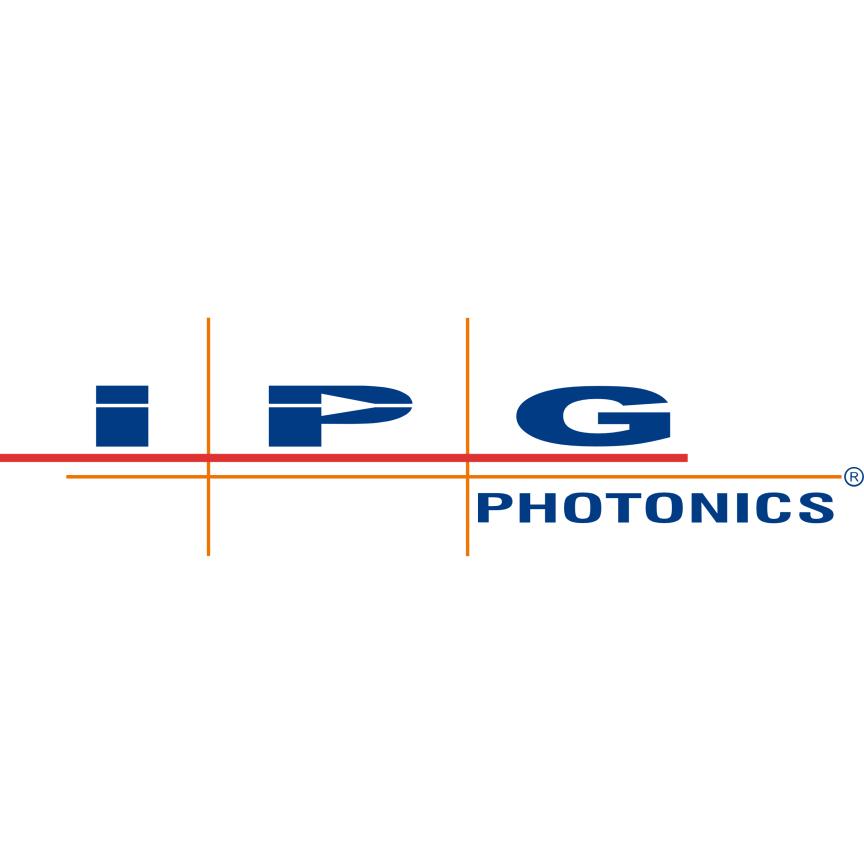First introduced in the late 90s, fibre lasers have come to have dominance over other technologies in 1μm lasers. The combination of low maintenance, high electrical efficiency, and very high beam quality has allowed fibre lasers to become a highly disruptive technology in markets from high power lasers for cutting, cladding, and welding, to low power lasers suitable for medical and marking applications.
IPG Photonics has come to dominate the market for fibre lasers of CW powers over a kilowatt. Early on, the company made the decision to follow a ‘vertically integrated’ business model, controlling the supply of its own diodes and fibre, which has allowed it to price its products competitively within the market. Other high power laser manufacturers are seeking either to offer similar products, or to make their competing technologies (such as DPSS, disk, or even CO2 lasers) more competitive. Either way, in the multi-kilowatt market at least, catching up with IPG will be a challenge.
The importance of diodes
While IPG produce their own diodes, other fibre laser manufacturers have to purchase them on an open market. California-based Oclaro, formed last year after the merger of Bookham and Avanex, supplies diodes to manufacturers of fibre lasers, with the stated aim of enabling them to compete with IPG. Yves Le Maitre, general manager of advanced photonic solutions at Oclaro, explains the components of a fibre laser system: ‘If you open up a fibre laser, you find the gain medium, which is usually kind of the “secret sauce” – a special, doped fibre that’s going to generate the laser. There are several doping materials in use.’ He adds that the cladding each manufacturer uses around the doped gain fibre, and its ability to absorb and combine the energy of the pumping diodes, is also of key importance. ‘Of course, there are many different types of fibre laser, and we tend to see them in three different categories: the sub 80W, the 100-500W, and the kilowatt and multi-kilowatt lasers. As you go higher and higher in terms of the power output of those products, you need more diodes, and so the importance of diode costs becomes very important as you go to kilowatt power. If you look at the importance of the diode as part of the total cost, sub 100W the diode is about 40-50 per cent of the total cost, whereas when you get to kilowatt powers, 60-70 per cent of the cost is diodes,’ he says.
‘The second important consideration is that once you have those diodes, and you’re going to need 20-50 of them in very high power fibre lasers, you have to find a way to combine them,’ says Le Maitre. ‘Fibre combiners can combine 3-7 diodes into one fibre for low power products, or 13-19 into one fibre at high powers, and people are now trying to push that to 30 diodes to one combiner in a single fibre, which creates a lot of issues on the fibre side, in terms of the technologies to dissipate the heat, and deal with the lost power associated with this.’ Once the diodes are combined into fibres, the output of these fibres is then used to pump the ‘special’ fibre that serves as the gain medium for the laser.
By tailoring its products, based on an understanding of the demands of the fibre laser industry, Oclaro hopes to enable more competition within the marketplace. ‘That’s what we’re trying to do here; Oclaro is providing the broader market with a set of pumping solutions, which is going to enable them to compete with IPG.’
Multi-kilowatt
In the category of multi-kilowatt fibre laser, IPG’s main competition comes from German laser systems giant Rofin. Andy May is managing director of Rofin-Baasel UK, and also managing director of the group’s UK-based subsidiary ES Technology. Rofin first introduced a 1kW fibre laser in 2007, and followed that up with a 2kW laser in 2009. May states that, from his point of view, the kilowatt market for fibre lasers is ‘not a one horse race.’ He adds: ‘There’s no question that IPG has a degree of market leadership; in the multi-kilowatt space, there’s nobody except Rofin and IPG.’ It is, however, a market into which May believes Rofin is well-placed to pursue IPG, having successfully developed a 1kW, single mode module: ‘That was a major step, in terms of attacking [the high power market], because to move beyond that [1kW] you’re only talking about multiplexing,’ he says, referring to the way in which several laser modules can be spliced into one output.
May is quick to point out, however, that the business of manufacturing fibre lasers is ‘broader than an outsider might think’, stating that the market is ‘fragmented, both in terms of the technologies used, and in terms of their applications’, citing pulsed versus continuous wave lasers, picosecond lasers for micromachining, and nanosecond lasers for marking systems. ‘It’s clear that within the sales of laser marking equipment, it’s the whole package that people are buying. That might mean maintenance and product support, or it might mean worldwide presence, or it might mean comfort that the manufacturer is economically sound and going to be around for decades to come. People make their own decisions, and the customers for those applications are looking for a solution.’
Rofin also produces disk and DPSS lasers, which are aimed at a similar high-power, one micron market as fibre lasers. The company also offers direct diode lasers for materials processing, which May states are becoming an ever more attractive alternative to fibre lasers: ‘Increasingly, one can couple more and more of an incoherent diode laser’s output into smaller and smaller fibres, and this starts to make them rather interesting. For some applications, taking all that fibre laser output and using it to pump an active fibre is not necessarily the right way to go,’ he says, adding the use of direct diode lasers can effectively cut out the middleman. The beam quality and power available from direct diode lasers is inferior to that of fibre lasers, but suitable for some tasks such as brazing, or some welding applications.
Playing a different game
While the high-power end of the fibre laser market is dominated by a couple of big players, more competition exists at lower powers, especially with pulsed lasers. UK-based SPI lasers offers pulsed fibre lasers, in the 40W, 1.25MJ category, primarily for marking applications. The company also produces CW fibre lasers up to 400W. When it comes to competing with the bigger players, Jack Gabzdyl, product line manager, is confident of SPI’s strengths: ‘We plough our own furrow, and we have our own customers. Our pulsed lasers have different design architecture to the majority of other pulsed lasers in the marketplace, which yields benefits for the customer. Our designs allow us to vary the pulse duration. This isn’t particularly new, but it’s taking the market a while to appreciate and understand the benefits. People are used to q-switched YAG lasers, which have a fixed pulse width. Our architecture doesn’t use a q-switch; we have a directly-modulated semiconductor seed laser, which is then amplified with a MOPA architecture,’ states Gabzdyl, adding that the electronic control of the seed diode laser allows the pulse duration to be variable across a 10-200ns range.
Sometimes the high beam quality of a fibre laser is unnecessary. For cutting applications, SPI offers a 400W, single mode fibre laser, but the company is also introducing a higher-mode laser, also at 400W, with an M2 of 4, which equates to a more diffuse beam than the M2 ~1 offered by many fibre lasers. ‘This is an engineered mode,’ explains Gabzdyl. ‘The issue with fibre lasers for welding, for example, is sometimes the beam quality is too good. If this is addressed by defocusing, it can lead to depth of field problems, because working out of focus leads to a diverging beam.’ The modal distribution is achieved through fibre design and through mode control techniques employed in the manufacturing process.

Fianium’s FP1060-HE high-energy ultrafast fibre laser range.
Also in the more-specialised market for fibre solutions, UK-based ultrafast fibre laser producer Fianium has seen its fibre-based picosecond and femtosecond lasers weather the storms of the recession particularly well, as John Clowes, director of business development at the company, explains: ‘The last two years have been very interesting for Fianium. There are certain industrial markets, such as the semiconductor and microelectronic markets, that have been hit quite heavily. However, we’ve found that many companies have focused their engineering efforts on new technology development to improve processes and to utilise state-of-the-art laser systems. Fibre lasers, and ultrafast fibre lasers in particular, are a very attractive enabling technology and we have therefore actually seen a significant growth in our industrial sales.’
Materials processing with ultrafast lasers is a cold ablation process, he explains: ‘The users aren’t relying on melting the material, they’re relying on very quickly evaporating it and ablating it before there’s any heat build-up in the sample. What that means is that you can achieve very high precision processes, such as marking, patterning, and scribing, where heat build-up is minimised.’ Ultrafast lasers are aimed at micromachining applications, and Fianium’s solutions are significantly more cost-effective than their conventional, non-fibre counterparts. There are still, however, some limitations as to the maximum pulse energy achievable from fibre systems. ‘When you start looking towards several megawatts of peak power and hundreds of micro Joules of pulse energy, it becomes very difficult to extract that energy directly from fibre because non-linear effects reduce the maximum peak power you can extract from the fibre,’ says Clowes. ‘In many cases, hybrid laser systems comprising ultrafast fibre laser seeds and solid-state amplifiers are being used to scale the energy. Such systems have been developed by companies such as Trumpf (TruMicro) and Coherent (Talisker) to access the benefits of both technologies.’
Broad market
Le Maitre cites Oclaro’s estimate that the market for fibre lasers in materials processing is worth approximately $250m annually. He believes that, in the multi-kilowatt space at least, whichever manufacturer can most effectively reduce costs per kilowatt will gain the one-micron market share, be that through fibre lasers or otherwise. ‘Currently, all the manufacturers kind of converge at the $100,000 per kilowatt point,’ he says.
Whatever the outcome of this race to cut costs, Le Maitre is clear as to where he believes it started: ‘I think that [prior to the introduction of fibre lasers] there was almost a sort of comfort between the big players in the photonics industry. IPG came in with a very disruptive approach, which had not been seen in that side of the market. IPG reduced the price [of laser processing] at a rate which had not been seen before, and I think that it took the big guys by surprise. Now, after two or three years of continuous success [for IPG], I think the big players are realising that they have to adjust to this new model in which prices decrease much faster than they have in the past. It’s a very different model, and I think the bigger players are just adjusting to it now. They are trying to defend their positions on existing technologies, be it disk laser, or solid state, or even CO2, but at the same time they are really recognising that IPG changed the game, and that they need to adjust to this.’


